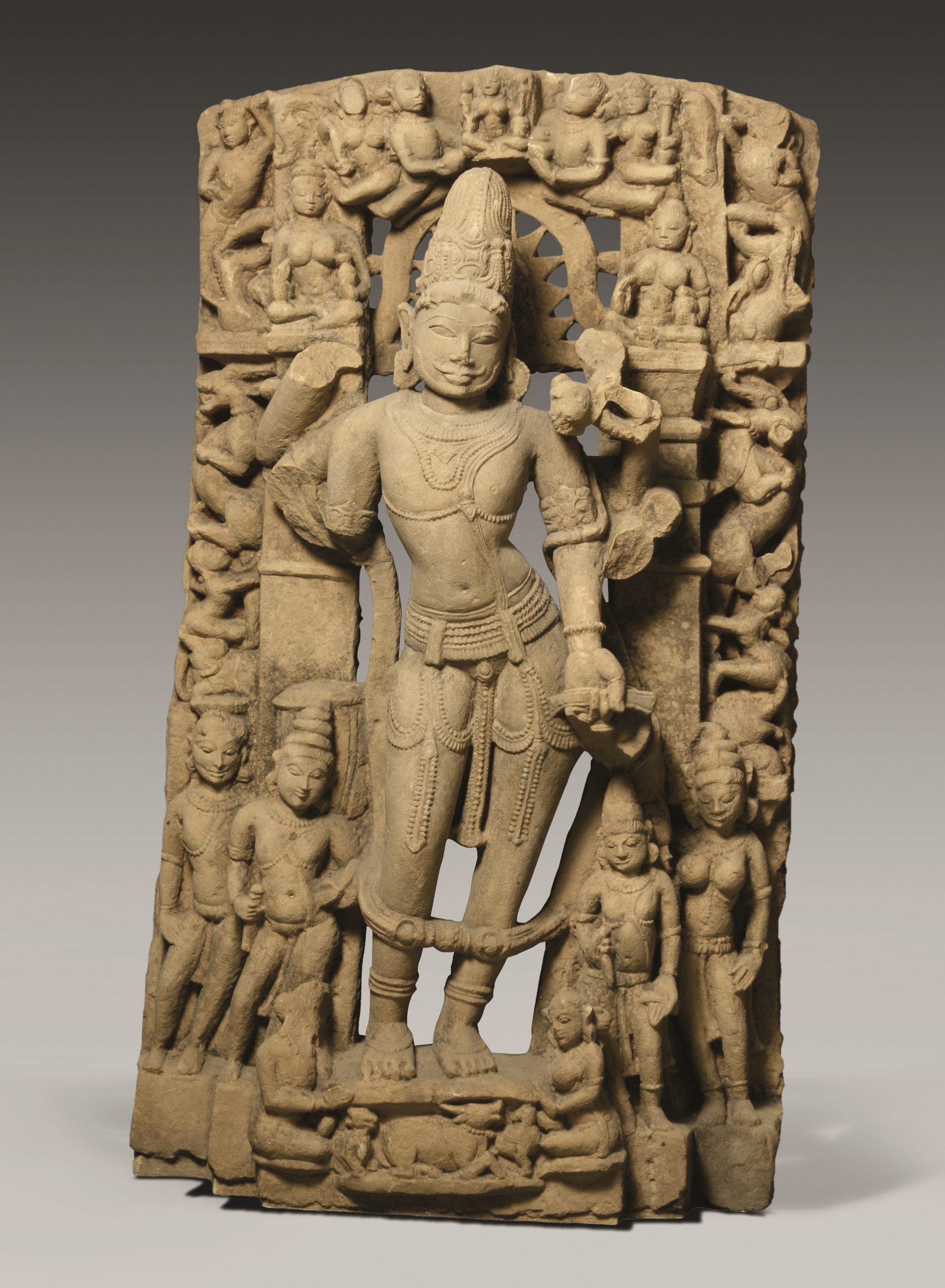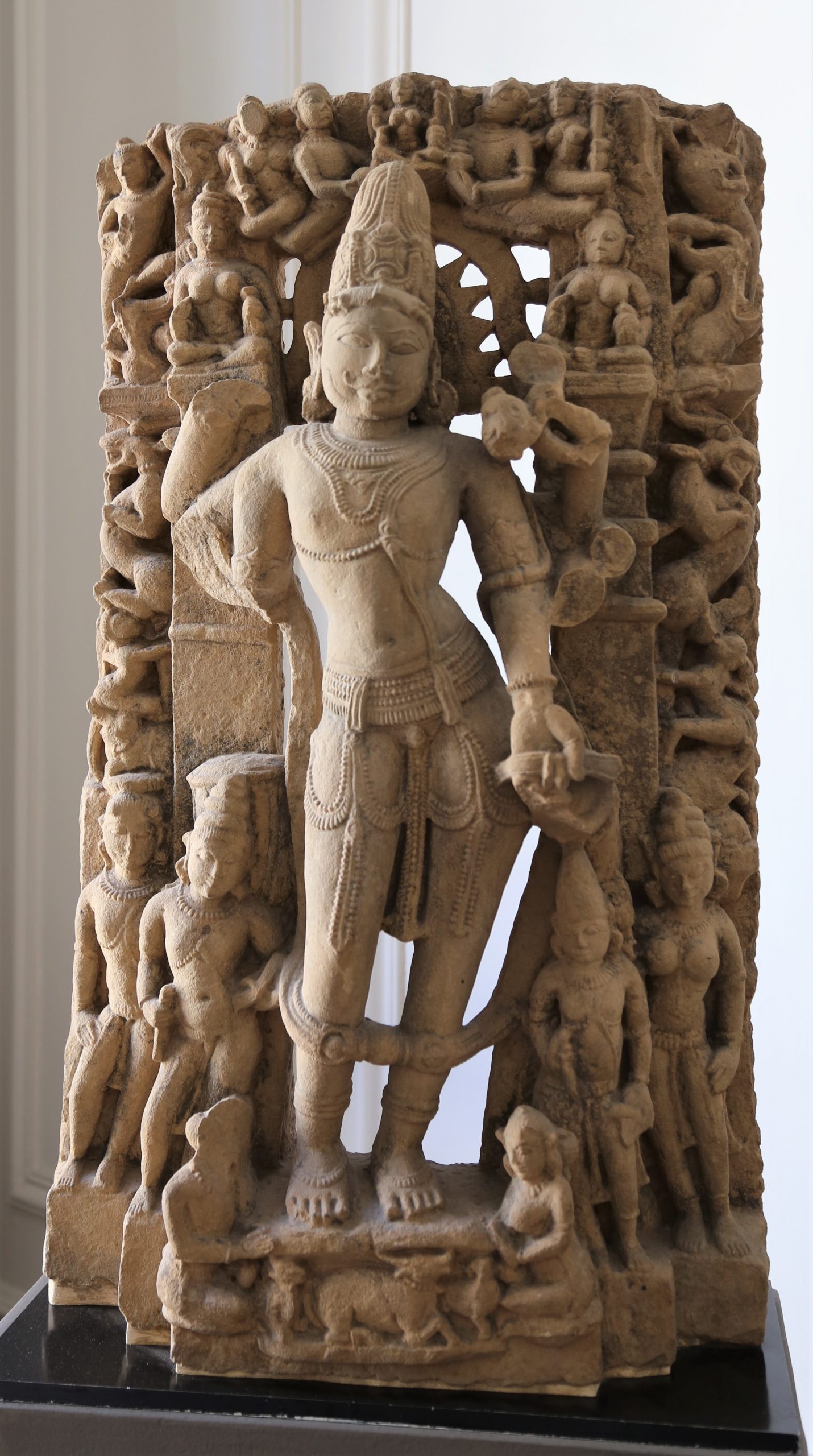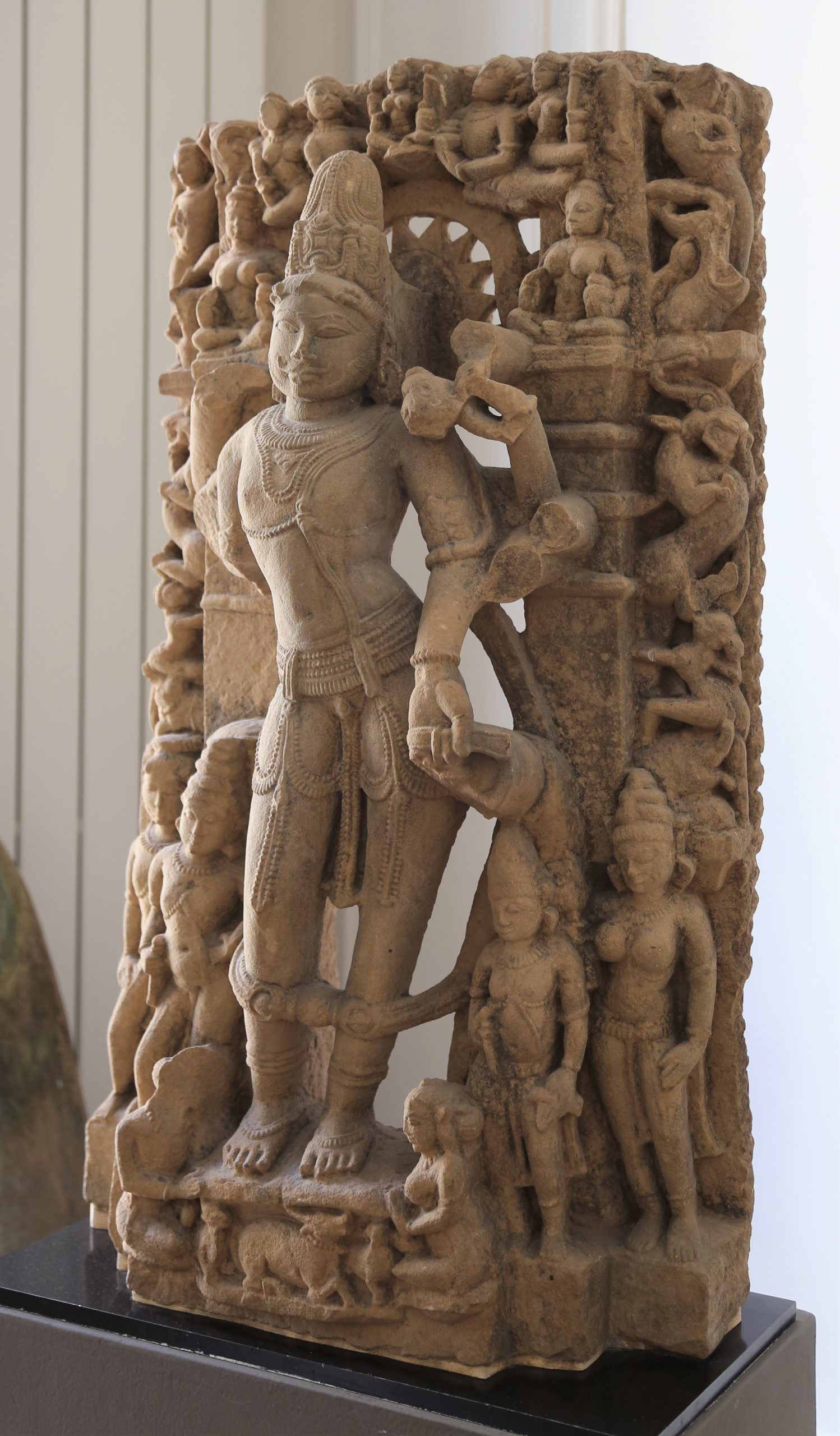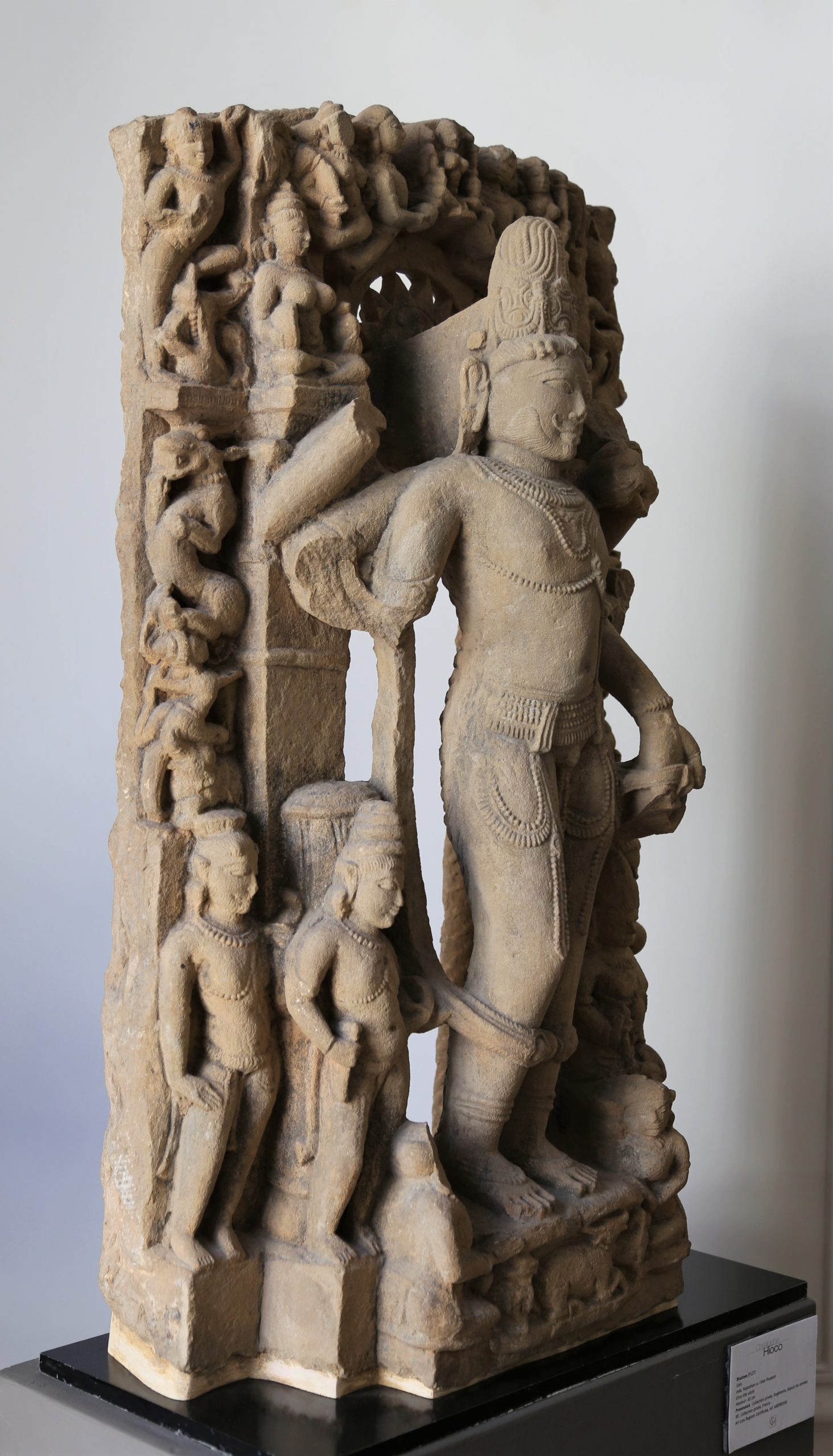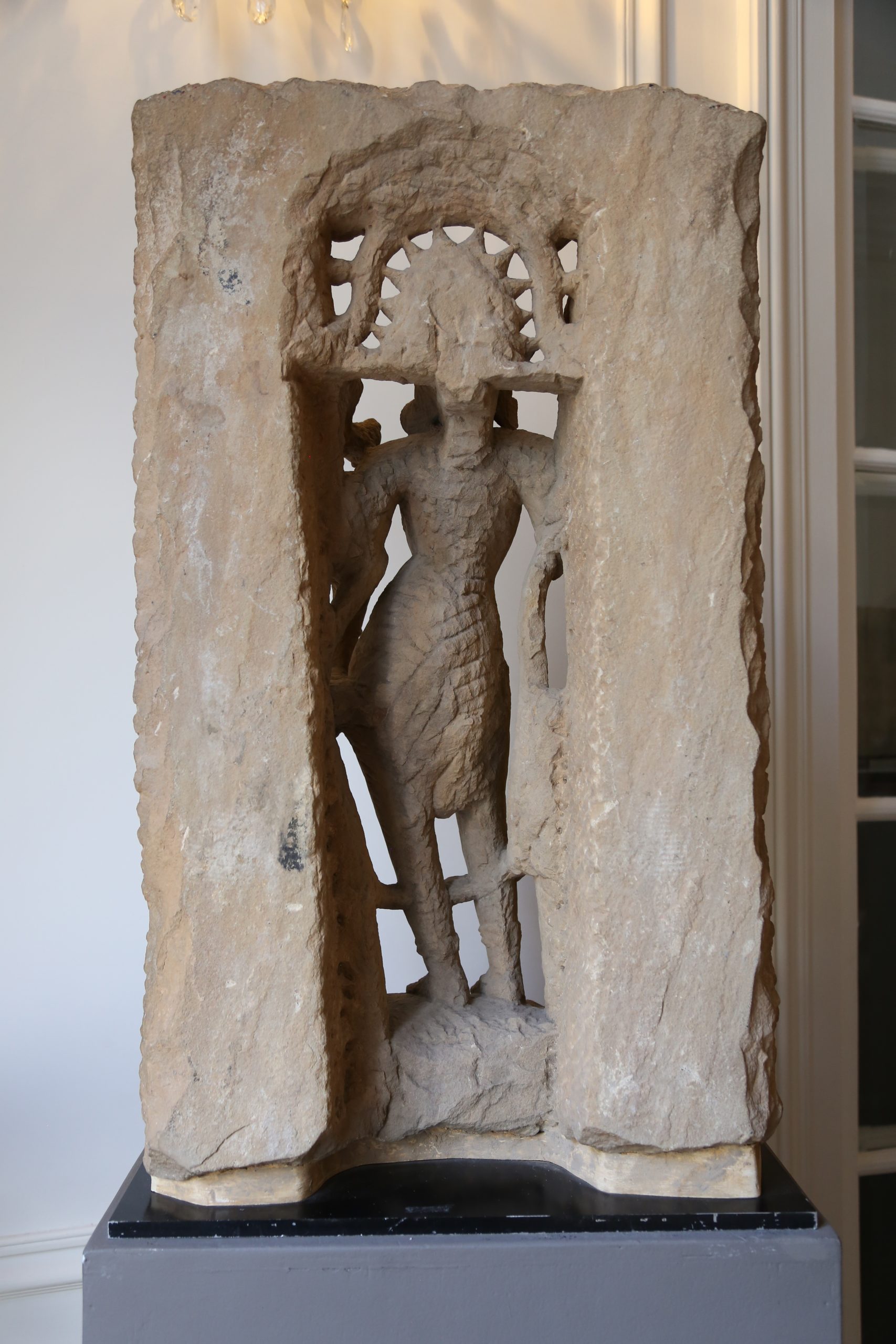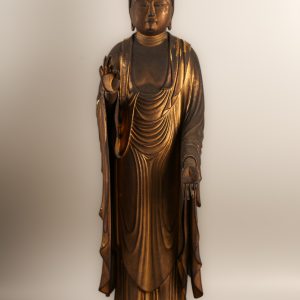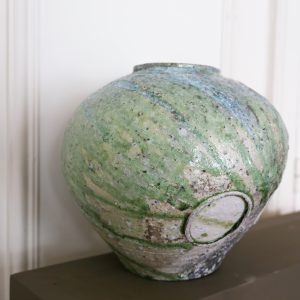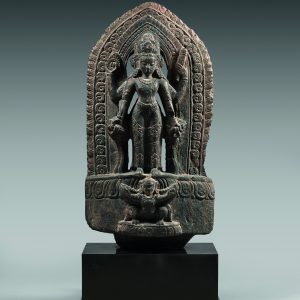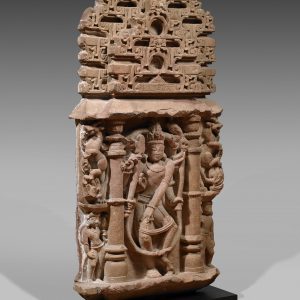Yama
Sandstone
India, Rajasthan or Uttar Pradesh
Circa 12th century
H. 81 cm or 32
Description
A rare figure, that of the God of the Cosmic Law
Yama stands here in an elegant triple bending or tribhanga posture. He wears a long dhotī held at the waist by a festoon belt adorned with beads, as well as the Brahmanic cord on his torso. The god is richly bejeweled: necklaces, bracelets, and earrings. His face, with a beautiful beard, is remarkable for its almond-shaped eyes and we must admire his headdress: a high bun held by a richly adorned tiara cut in front of an openwork nimbus. The size of the sculpture will not fail to impress us, given that artworks representing this God are now very rare on the market and their condition often of poorer quality than that of this remarkable stele. Around Yama is depicted a universe of subterrestrial worlds populated with characters and animals, forming a symbolic network of great complexity, precious witnesses to the apogee of medieval Indian statuary in north-central India.
Yama: an ancient Aryan deity and a protector of the temples
Yama is surrounded by various assistants, mythical beasts and apsaras. This ancient deity, probably of Aryan origin, as evidenced by the scalloped nimbus that crowns him, presides over the court of the dead (Vicharabhu). He is helped in his task by Chitragupta, who presents him with a list of the actions of the dead, and he renders justice with the sceptre of the dead crowned with a skull (khaṭvāṅga or yamadaṇḍa), an attribute still visible in a fragmentary way in one of his left hands. With his other hands, the god undoubtedly held a lasso (paśu), used to catch souls, an axe and a dagger. At the base of the stele, two devotees surround the god’s mount, a buffalo, and pray to him. Associated with the deities from the Rig-Veda (Ṛgveda), the beard symbolizes this anteriority and assimilates Yama to the oldest deities of the Vedic corpus. Yama is one of the guardians of directions or Aṣṭadikpāla. Eight in number, these protective deities preside over the cardinal and inter-cardinal points of the religious edifice, nestled on the outer walls of the temples where pilgrims pay homage to them during the circumambulation.
A remarkable witness to the evolution of statuary in North-Central India
In the 11th century in India, the vassal dynasties of the Gurjara-Pratihāra empire gained independence from the central power. It is probably on this occasion and on one of these numerous sites initiated by the Candella, Gujara, Paramara or Kalachuri dynasties that our stele was created. Stylistically close to the canons of the statuary of Rājasthān from the East, this sculpture of Yama is characterized by a superb suppleness and plasticity of the body, emblematic of the most beautiful achievements of medieval art. The treatment of the face and the jewelry, as well as the remarkable sensuality of the modeling can be found on works originating from northern Uttar Pradesh of the medieval period, for example in Khajurāho (9th-11th century).
Provenance: Private collection, England, since the 1980s.
Private collection, France, acquired from Christie’s New York, 21 september 2007, lot 82.
Art Loss Register Certificate, ref. S00090106
- Amina Okada, Sculptures indiennes du Musée Guimet, p. 189-191.
- Pratapaditya Pal, Indian Sculpture, Los Angeles County Museum of Art, p. 288-289.

